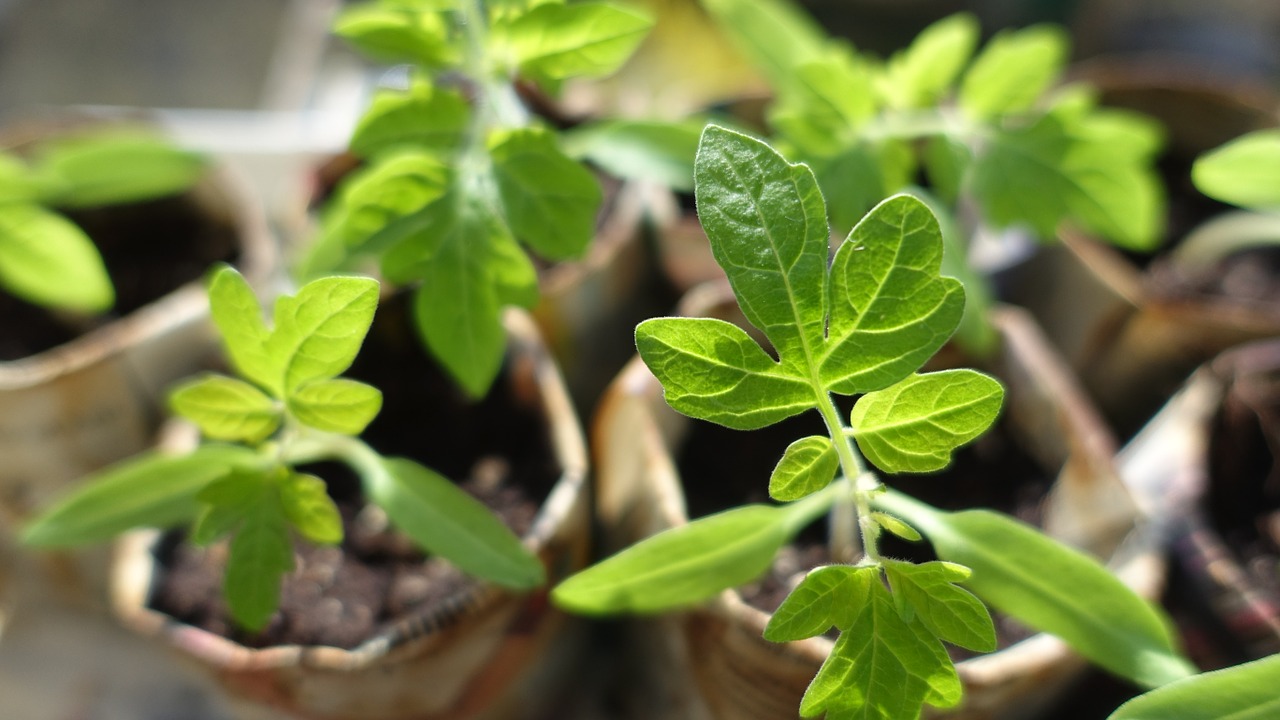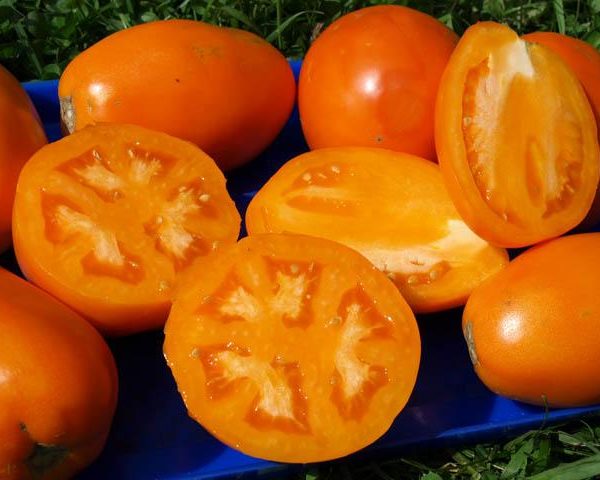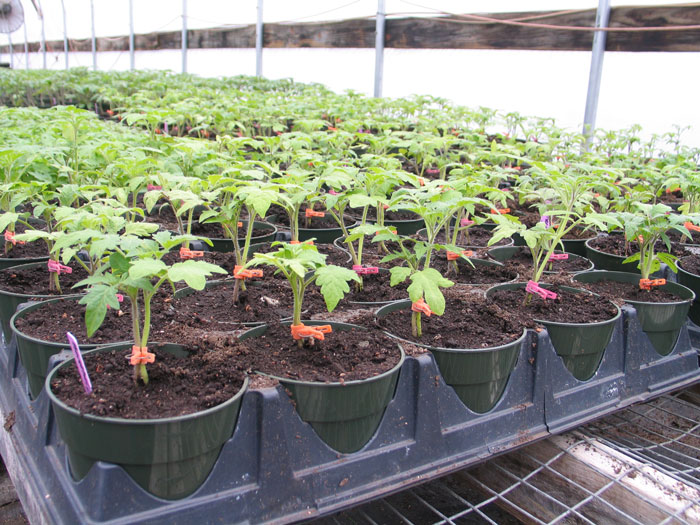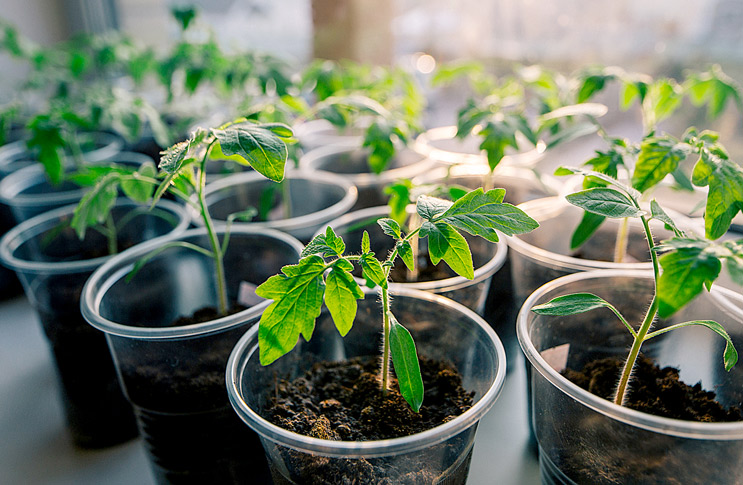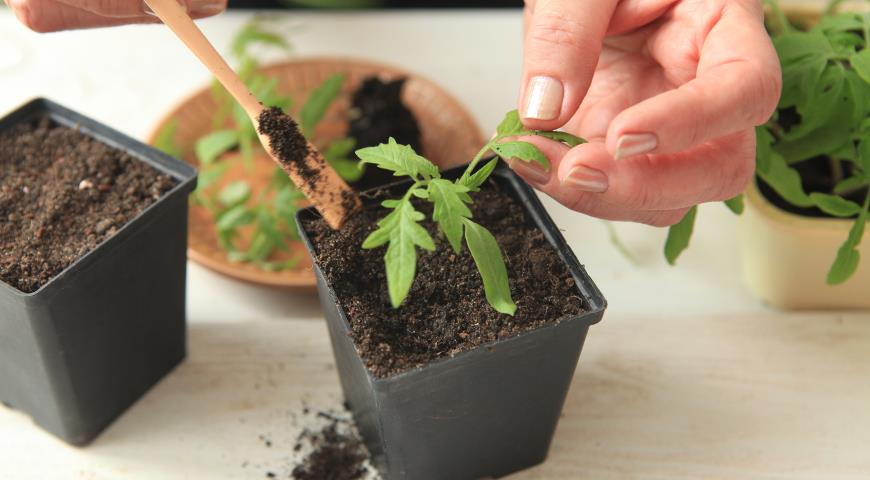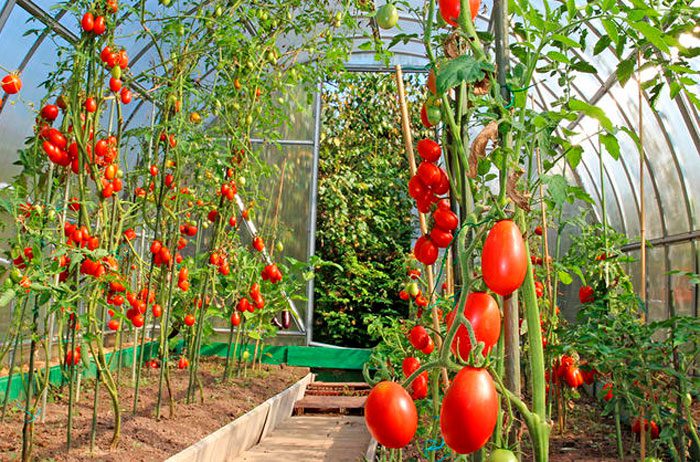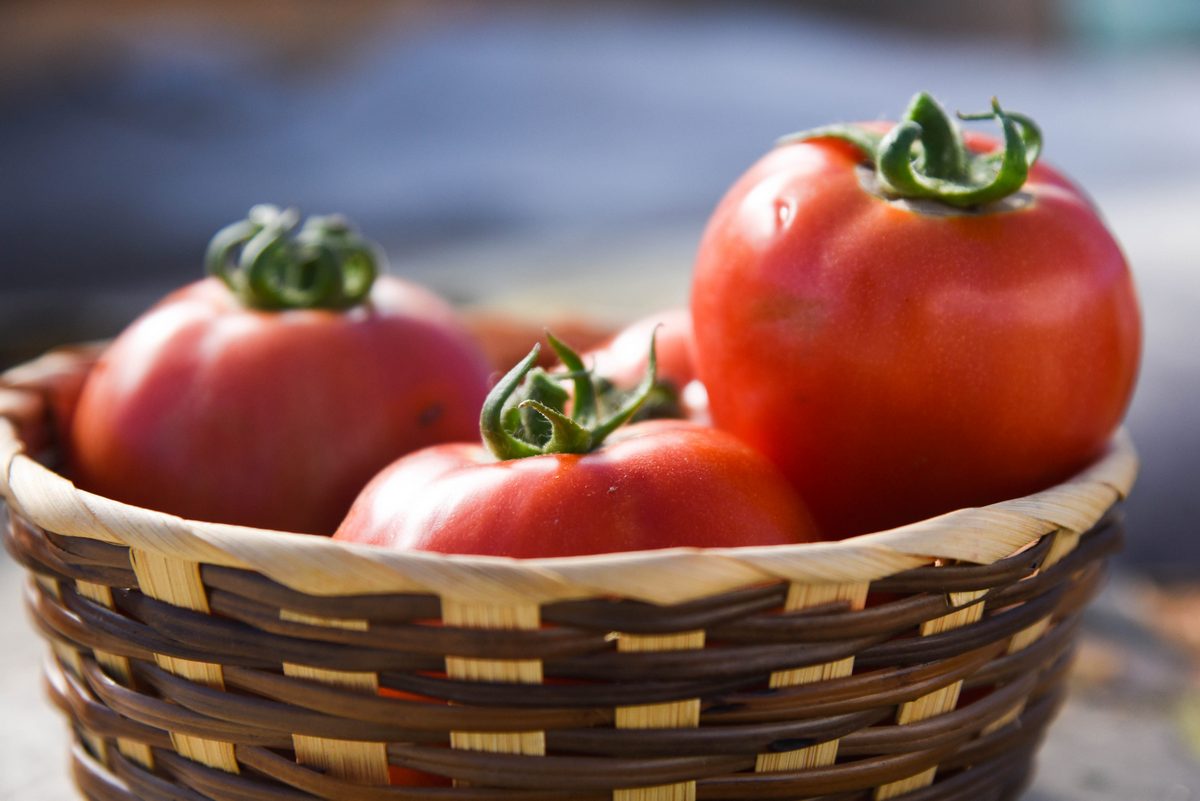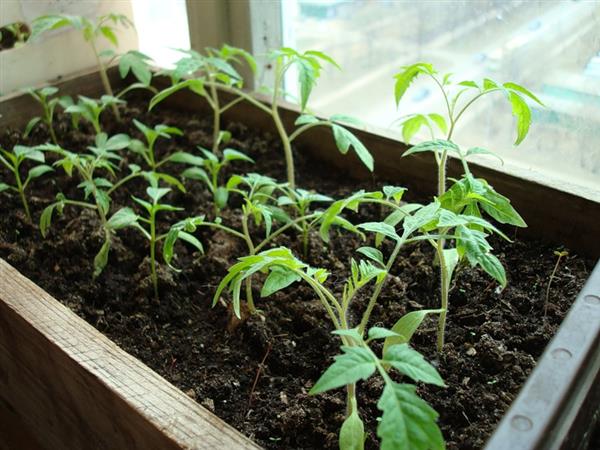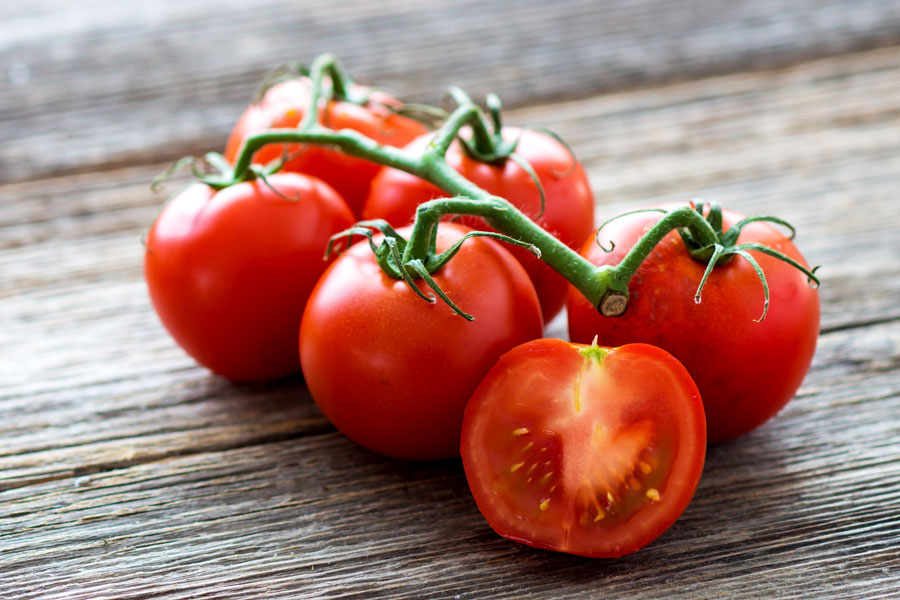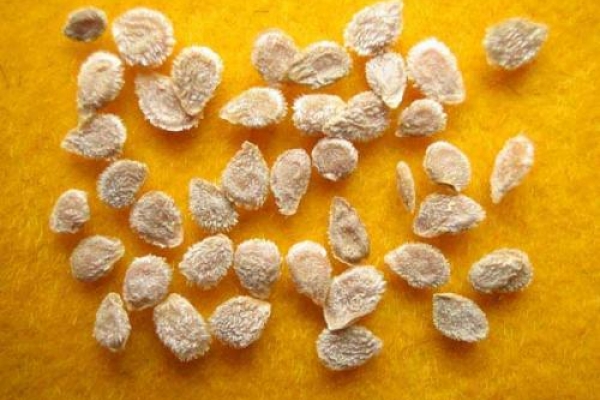Content:
A high-quality full-fledged crop of tomatoes cannot be obtained without competent agricultural technology for growing tomatoes. It is necessary to provide all conditions for the full growth and development of the tomato in all growing phases.
Brief description of culture
Tomatoes are a herbaceous crop from the Solanov family. The fruits are obtained in the year of planting. The plant is characterized by a strong and well-developed root system, large and tasty fruits, strong stem and other specific botanical characteristics. Proper cultivation and care of tomato seedlings is the key to getting a good harvest.
Tomatoes: sowing and caring for seedlings
Variety selection
The correct choice of a variety is one of the main factors for a high, high quality and stable yield. In open ground conditions, it is recommended to plant determinant varieties with unlimited growth force. In the greenhouse, it is recommended to plant seeds or seedlings from indeterminate varieties that grow to a certain level.
The main positive properties of determinant tomato varieties are:
- short stature;
- a small number of formed stepchildren;
- fast ripening of fruits;
- compactness.
The most effective and common varieties in this category are:
- Sultan;
- Northern beauty;
- Blagovest;
- Aurora;
- Kemerovets;
- Uncle Stepa;
- Laura;
- Sensei;
- Demidov;
- Snezhana;
- Eugene;
- Gold Queen;
- Ballerina;
- Scarlet Mustang;
- Siberian trump card.
Among the indeterminate varieties, it is recommended to turn the choice to such varieties as:
- Scarlet candles;
- Havana cigar;
- Niagara;
- Konigsberg;
- Strawberry tree;
- Siberian giant;
- Gilded whitewash;
- Monisto chocolate;
- Italian spaghetti;
- Icicle pink;
- Pepper-shaped giant;
- Golden Konigsberg;
- Budenovka;
- Siberian shangi;
- Honey drop, etc.
In the conditions of Moscow and the Moscow region, it is recommended to use varieties of Timiryazev selection: Persimmon, White Naliv 2411, etc. Also recently, varieties that form purple fruits have become widespread.
When purchasing planting material, it is recommended to pay attention to the shape, size and average weight of the fruits, as well as the ripening period.
Site preparation
Tomatoes prefer open sunny areas, so it is not recommended to prepare a plot for them in a shady corner, next to the house. There should be no tall trees, pillars or other objects that could obscure the plants. At the same time, the site must be protected from the wind. The soil should be saturated with humus, the composition is optimal sandy or loamy.
The most suitable precursors for tomatoes are:
- bow;
- cucumbers;
- carrot.
Tomatoes should not be cultivated on the potato plot the previous season. Both of these crops have a number of similar pests (Colorado beetles, wireworm larvae, etc.).
Tomatoes are very demanding on what crops are grown near them on the site.The best option for the neighborhood with tomatoes is strawberries. With joint cultivation, the yield of both plants increases.
Before planting, it is recommended, if possible, to determine the acidity of the soil. The most suitable pH for tomatoes is 6-7.
How to grow tomato seedlings at home
It is necessary to prepare in advance special containers such as cassettes or boxes, which are filled with loosened, nutritious, air-permeable soil mixture. It must include sand, peat and mineral fertilizers.
A week before sowing, the soil in containers is treated with a 0.1% solution of Extrasol-55 at the rate of 1 tbsp. l. for 10 liters of water. This reduces the risk of developing black leg.
When a third of the seedlings is visible on the surface of the soil, the film should be removed and the containers should be placed in a bright place, otherwise they may stretch. When opening the cotyledons, it is necessary to reduce the temperature of growing seedlings to 18-20C during the day and up to + 15-16C in the dark. This will avoid pulling the seedlings out. After 1-1.5 weeks, the temperature is increased to + 20-22C and up to + 17-18C, respectively.
If the plants are not planted in cassettes, during the formation of the third true leaf, it is necessary to pick the seedlings in containers with a diameter of at least 8 cm, which are filled with nutritious soil. At the end of the dive, the seedlings are treated with a 0.1% solution of Extrasol-55.
In some cases, tomato seedlings dive directly into the greenhouse or greenhouse, but the seedlings usually lose most of the roots. To restore the rooting process, a week before the procedure, the soil in the greenhouse is cut with a knife in a perpendicular direction to a depth of about 10-15 cm and spilled with a solution of Speedfol-Amino Marine (30 ml / 10 l of water).
Planting
Tomato seedlings are transplanted into the greenhouse in the evening, which allows the seedlings to recover sooner and resume growth and development. It is necessary to ensure that as few roots are damaged during the transplantation process.
After transplanting into a greenhouse, the plants are spilled with clean water under the root, after which they are treated with Radiafarm solution (30 ml / 10 l of water). A week later, the procedure is repeated, reducing the dosage to 15 ml. For each seedling, there should be about half a liter of the prepared preparation. If the greenhouse is equipped with a drip irrigation system, during planting, the same substance is introduced at a dosage of 60 ml / 100 m2, and after a week the dosage is halved.
In order to sow tomatoes in open ground, it is necessary to prepare ridges 100-120 cm wide and 15-20 cm high. It is recommended to arrange them from the north to the south. The row spacing should be 70 cm for vigorous varieties, for medium-sized varieties - 50-55 cm, for low-growing ones - 40-45 cm. Between the plants in a row they make a distance of 30-35 cm. It is not recommended to make it larger.
A little water is poured into a pot or other container in which the tomato seedlings are located. This is necessary in order to make it easier to remove the bush from there along with the earthen lump.
Planting holes make the same depth as the pot. This will help to avoid damage to the roots during transplantation.They are transplanted in the evening when the air temperature drops.
About 100-150 ml of water is poured into the pits, then humus is added, mixed with mineral fertilizers in a ratio of 3: 1. There should not be a lot of fertilizers during this period. A plant with a lump of earth is vertically installed in a hole and sprinkled with soil. To speed up root formation, it is recommended to remove some of the foliage.
Garter
Agrotechnology of tomatoes necessarily implies this procedure, it is carried out some time after transplantation. It allows plants not to bend, not to break, to grow and develop fully. Positive effect:
- facilitating the care of plants;
- protection against damage by pests;
- protection from damage in strong wind or rain;
- protection of ripe fruits from rotting on the ground.
The most common garter for tomatoes is with pegs made from wood, plastic, metal, and other suitable materials. Their height depends on the height of the plants. For tall varieties, stakes up to 2-2.5 m high are suitable.
For tall plants, the best way is to tie the trellis. For this purpose, wooden poles are installed on the plot, between which slats or thick wire are installed in several rows. As the bushes grow, they will be attached to these slats.
Planting care
Irrigation
Outdoor tomatoes should be watered regularly. Irrigation should not be too frequent, it is sufficient to water once a week from May to mid-July and twice a week from mid-July to late summer. The first watering is carried out two weeks after planting. The water should be warm and settled. Irrigation is carried out from a bucket under the root in the evening. Watering should be plentiful so that, upon completion, a light crust forms on the soil surface.
It is also prohibited to use cold water for irrigation in the greenhouse (its temperature should not be lower than + 16C). It is necessary to pour water under the root, making sure that the bush itself remains dry. The substrate must be moist, as this reduces the risk of developing late blight.
Irrigation should be regular and carried out every 2-3 days. For tomatoes in a greenhouse, even a single case of drying out can be fatal. Plants become thin, quickly begin to turn yellow, dry and soon die. Watering is carried out in the morning, spending about 800-1200 liters of water per 100 m2 of plantings. 2 weeks before harvesting, the intensity of irrigation is reduced, avoided by frequent, light irrigation.
It is convenient to use plastic bottles for root irrigation. The bottom of the container is cut off and the container is driven in at an angle to the plant as a funnel through which irrigation will be carried out.
Stepping
In the process of cultivating tomatoes on the bushes, side shoots are formed - stepchildren. They interfere with the normal development and growth of the main trunk. Once every two weeks, they are subject to mandatory removal. Get rid of short shoots with scissors or a knife, and longer ones should be pinched off.
Pollination
A good harvest of tomatoes cannot be obtained without pollination. In open field conditions, this procedure usually does not cause problems - in warm, clear weather, bees or bumblebees do it.Care must be taken to ensure that these insects also enter the greenhouses.
In conditions of dense plantings and industrial plantings, it is recommended to equip the greenhouse with hydroponics. You can also shake the plants gently to scatter the pollen.
Top dressing
Top dressing of plants in the open field is carried out every one and a half weeks, and the first procedure is carried out two weeks after transplanting into open ground. In its absence, the bushes become pale, lethargic and risk dying. It is recommended to use fertilizers such as:
- nitrophoska;
- ammonium nitrate;
- solution of a monthly or 2-3-month-old mullein;
- bird droppings (mainly chicken);
- superphosphate.
In the greenhouse, it is recommended to carry out top dressing every one and a half to two weeks and combine them with irrigation. The first top dressing is carried out 12 days after planting the seedlings on the leaf and repeats it weekly. Also, treatments are carried out at the beginning of flowering and ripening of fruits.
To get large fruits, it is recommended to feed the plants on the leaf immediately after the formation of the ovaries with Benefit (60 ml / 10 l of water). The procedure is carried out 2-3 times a week and a half. Spraying with Sweet (30 ml / 10 l of water) has the following effect on the yield:
- accelerates the maturation process;
- increases the sugar content of fruits;
- improves the color of tomatoes;
- improves the stability of the crop for transportation.
Plant protection
In the process of cultivation, plants need protection from pests, diseases and weeds. The main diseases of this culture are:
- chlorotic curl of tomato foliage;
- septoria;
- tomato stem necrosis;
- phomosis;
- alternaria;
- cladosporiosis (brown olive spot);
- top rot;
- green and yellow spot at the peduncle;
- oedema;
- swirling;
- streak;
- gray rot;
- root rot;
- bacterial wilting;
- mosaic;
- late blight;
- blackleg;
- cracking of fruits;
- powdery mildew, etc.
The most common pests are:
- whitefly;
- garden scoop;
- wireworm;
- Colorado beetle;
- thrips;
- aphid;
- bear.
To get rid of weeds, it is recommended to regularly weed the plots. Disease and pest protection includes the use of appropriate fungicides and insecticides, as well as the use of resistant varieties. It must be borne in mind that it has not yet been possible to develop a variety that is resistant to late blight, one of the most harmful diseases of tomatoes.
Tomatoes from planting to the end of the season require constant care, but at the end of the season, the gardener will be rewarded with a good and quality harvest.
